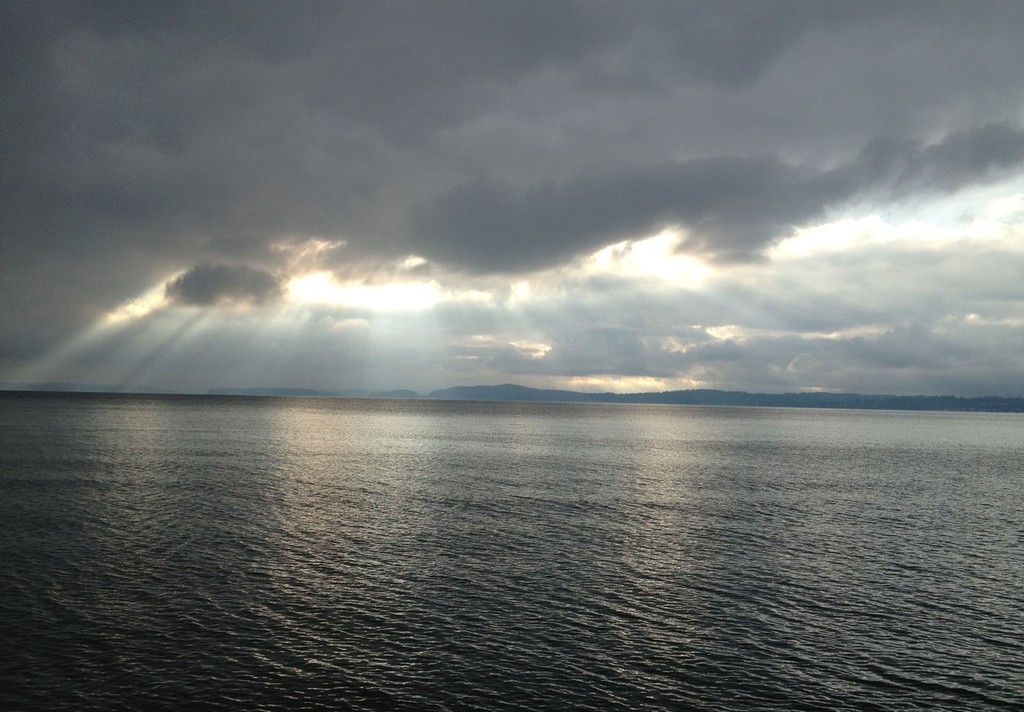El Nino- The ill-begotten boy of the Pacific Ocean—World Cruising news
by David Schmidt, Sail-World USA Editor on 21 Aug 2015

Warm and windless Puget Sound David Schmidt
One of the things that I love the most about living in Seattle are the cool, cloudy summer mornings that mature into bright blue afternoons that are void of humidity and excess heat. Sure, shorts and t-shirts are comfortable attire while cruising on nearby Puget Sound, but the wise sailor always packs jeans and a fleece jacket (or two) for evenings, when things cool off appreciably. Coming from a childhood spent on the East Coast, where heat and humidity can easily become debilitating during summer’s canine moments, I’ve always loved the fact that I don’t need to air condition my house or office, nor do I need to stock gallons of Gatorade in the fridge.
That is, until this year.
For anyone living in the northern hemisphere, 2015 has been a hot one…in fact, it’s a contender for the hottest year on record, and here in Seattle it’s delivering temperatures north of 90-degrees Fahrenheit (32 degrees Celsius), not the pleasant 70-degree Fahrenheit (21 degrees Celsius) summer weather that we know and love in the Pacific Northwest. Similar stories abound from all corners of the world, where people are forced to deal with high and sustained heat and other abnormalities. And while finger pointing is usually a poor form of diplomacy, this time, a certain naughty boy is to blame.
For anyone who follows meteorology, El Nino (the boy) is a well-studied, complex weather phenomenon that is marked by higher-than-average surface water temperatures in the eastern Pacific Ocean every few years. Trade winds that blow from the east to the west tend to abate, thus intensifying temperatures in the Pacific. Ashore, this can lead to hotter-than-average temperatures in Australia, intensified rains in South America, and warmer-than-average winters in North America (sorry, skiers).
Depending on the year and the complex brew of meteorological conditions, El Nino’s can last anywhere from a few months to a couple of years. And while they can bring wet weather to moisture-starved regions such as California, the precipitation tends to fall as rain, not as life-sustaining snow.
And while no California farmer will complain about falling water these days, the simple fact remains that a solid snowpack does far more to regulate groundwater levels than heavy rain, which has the tendency to run off into the rivers, and-vis-à-vis-the ocean, or to cause damaging floods (read: too much of a good thing, delivered too quickly).
Meteorologists are now predicting that 2015’s El Nino could prove to be one of the strongest (if not the strongest) El Nino’s on record.
For sailors, the warmer temps can be nice for longer passages. Here in Seattle however, our breeze, which always tends to be light in the summer, seems to be even more erratic. Even offshore, racers competing in this summer’s Transpac Race reported unusual wind patterns (as well as tons of unrelated garbage and detritus) and lighter-than-average breezes.
Yet El Nino is by no means a North American or even a West Coast affair, as this ill-behaved juvenile delinquent can easily affect antipodean regions such as Australia. Typically, El Nino years spell less rainfall for Oz (winter through spring), in addition to higher temperatures, that tends to target the beautiful Queensland (northeast) region. In fact, nine out of Australia’s ten driest winter-through-spring periods have occurred during El Nino years.
Given the global connectivity of our planet’s ecosystems, it’s inevitable that big temperature and moisture swings will have far-ranging impacts. For example, whole swaths of Asia have also been affected by El Nino events, including forest fires and poor visibility.
And that’s not even to speak of the most ecologically sensitive areas. For example, climatologists are predicting that this year’s El Nino could directly threaten the Galapagos Islands, situated some 620 miles (1,000 kilometers) off the coast of Ecuador, with heavy rains, strong winds and warmer-than-average ocean temperatures.
Specifically, species such as marine iguanas, which only feed on algae, could be in big trouble, as their food source tends to get scarce when surface water temperatures rise. Yet other life forms are also at risk on these remote islands. The 1997/1998 El Nino event, for example, destroyed coral reefs and killed-off colonies of penguins, cormorants and sea lions.
According to reports, inside this issue, the Galapagos Islands are expected to be a focal point of the United Nations Conference on Climate Change, which is being held in Paris, France from 30 November to 11 December 2015.
Additionally, El Nino is expected to generate extra heat around the equator, which is likely to trigger bigger and more frequent storm cycles. This can spell flooding ashore, and it can kick up some nasty coastal and offshore conditions for globe-girdling cruisers.
Meanwhile, here in Seattle, we are patiently (or, in my case, not so patiently) awaiting fall’s cooler temperatures. And while my wife and I have resisted the urge to air-condition our house or drink day-glow colored liquids, we’re not exactly buying ski passes for the 2015/2016 season, either. Instead, we’re focusing on the fact that a warm and wet winter could actually make for some nice sailing days, especially if the critical ingredient-wind-returns to Puget Sound.
May the four winds blow you safely home,
If you want to link to this article then please use this URL: www.sail-world.com/137664